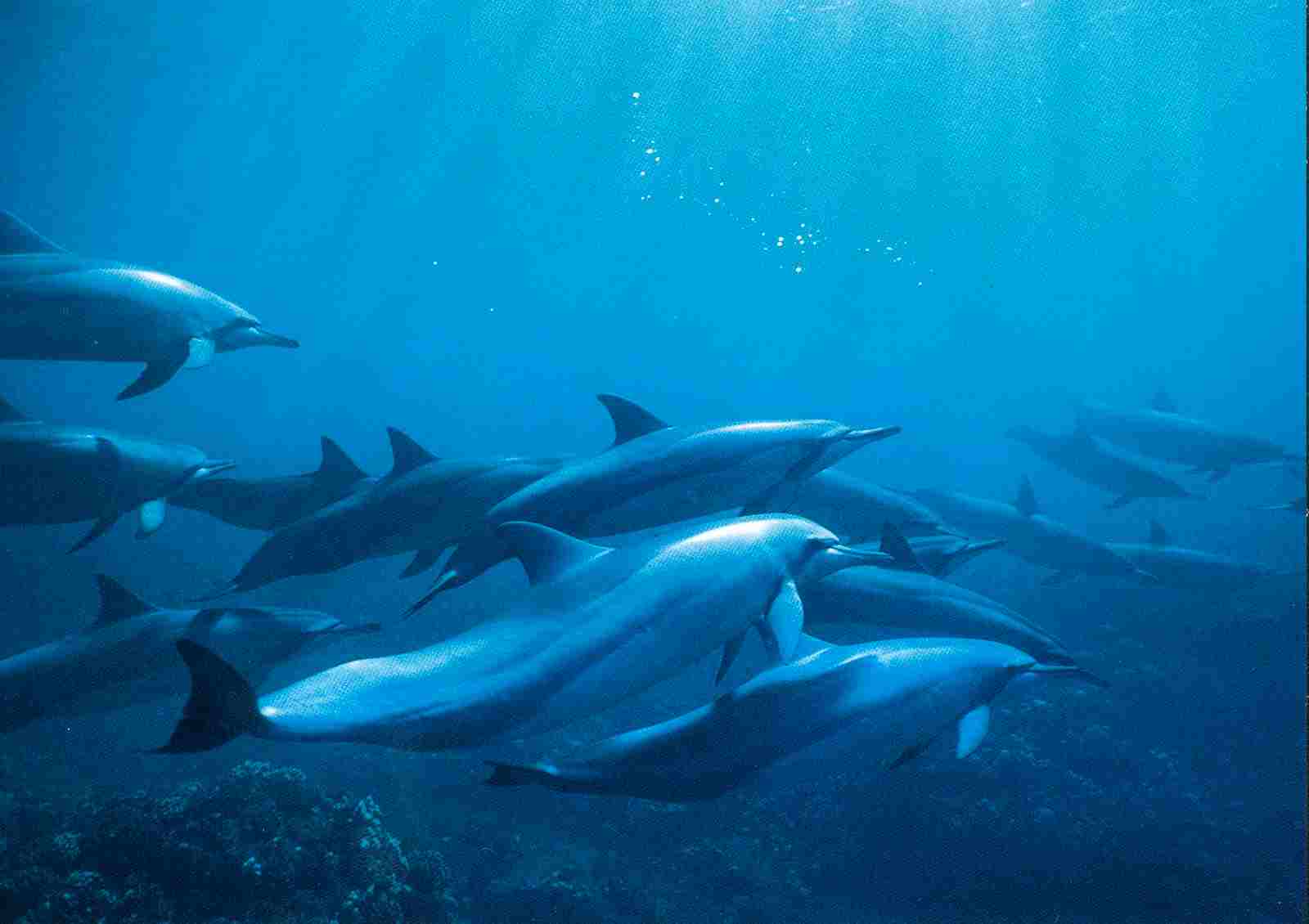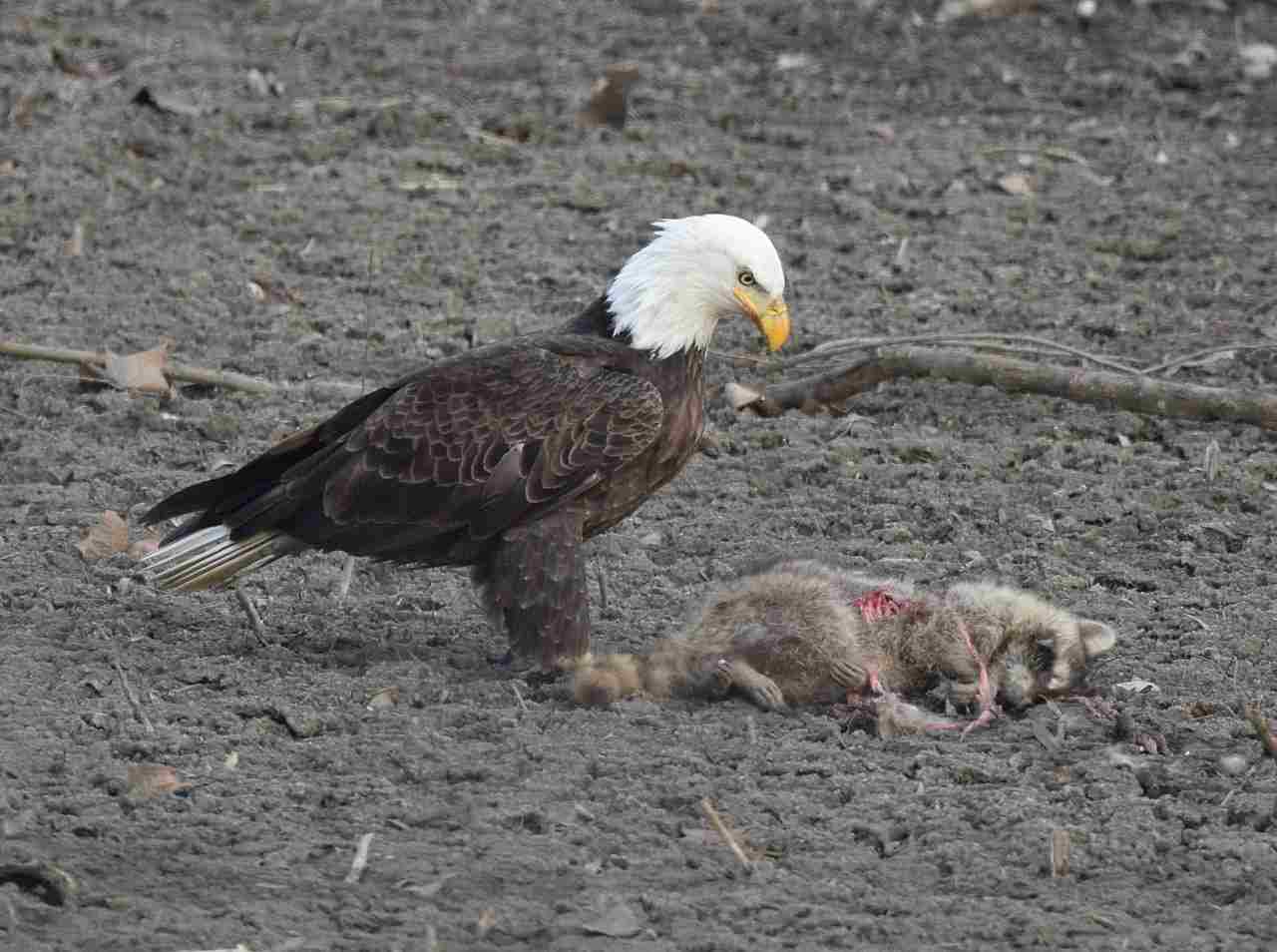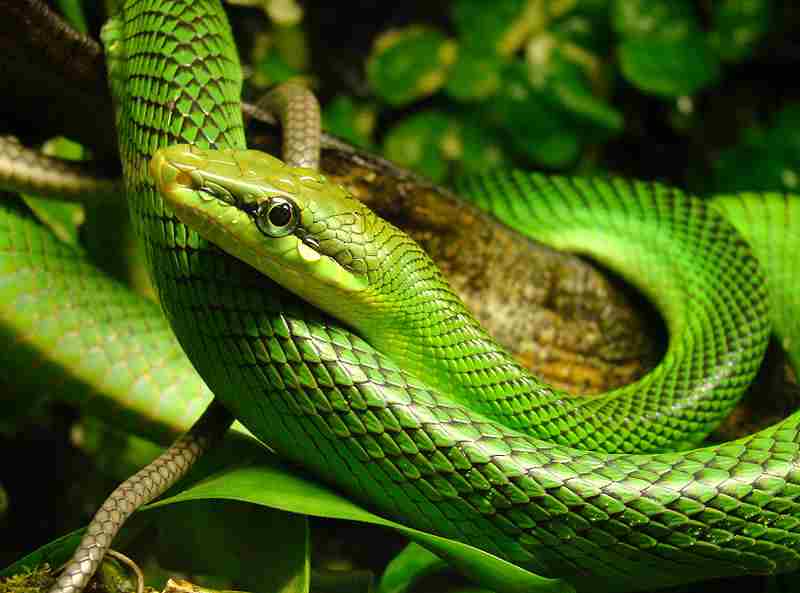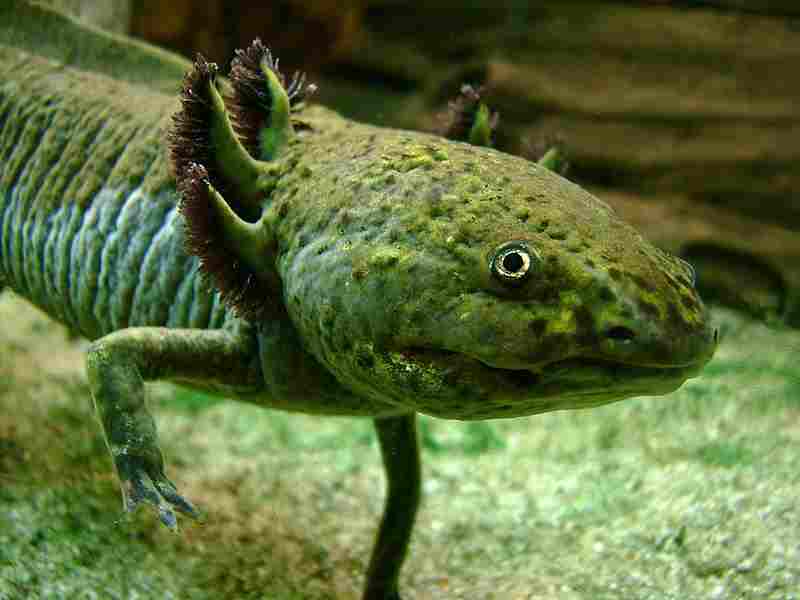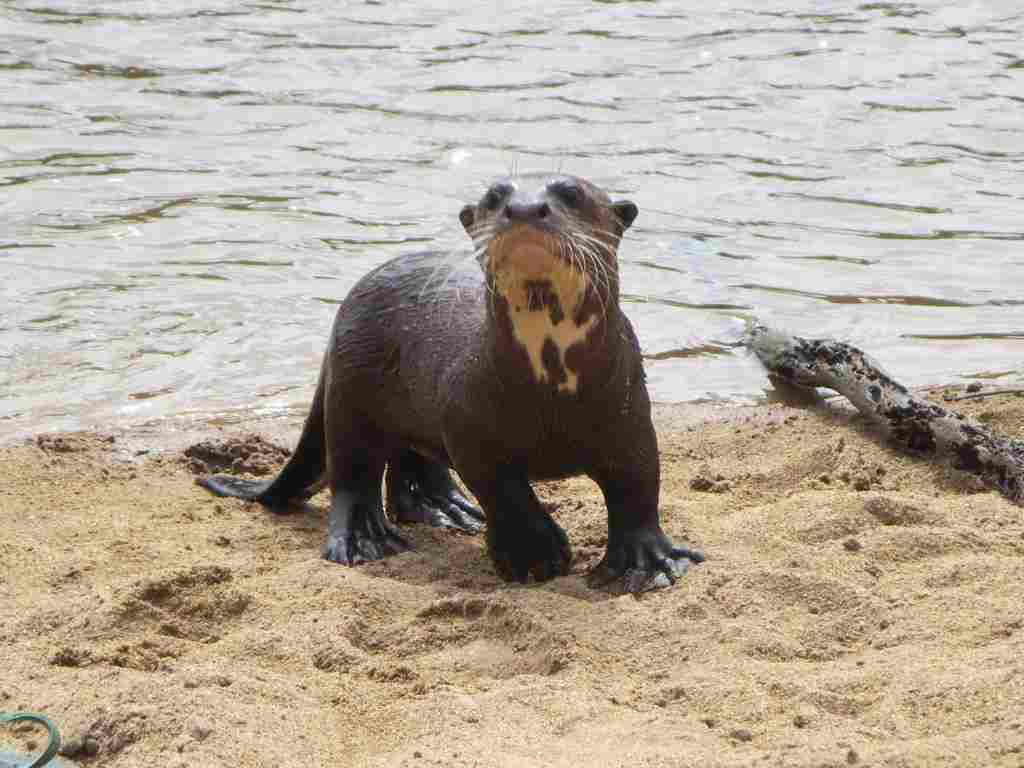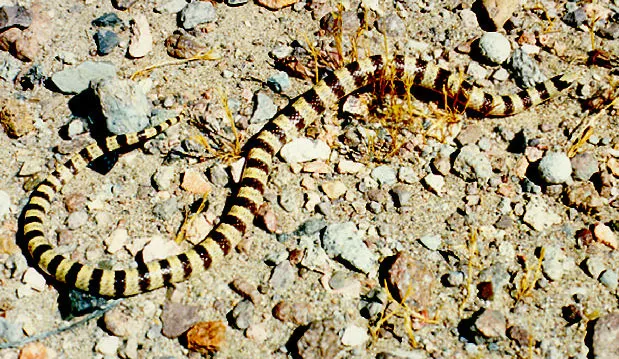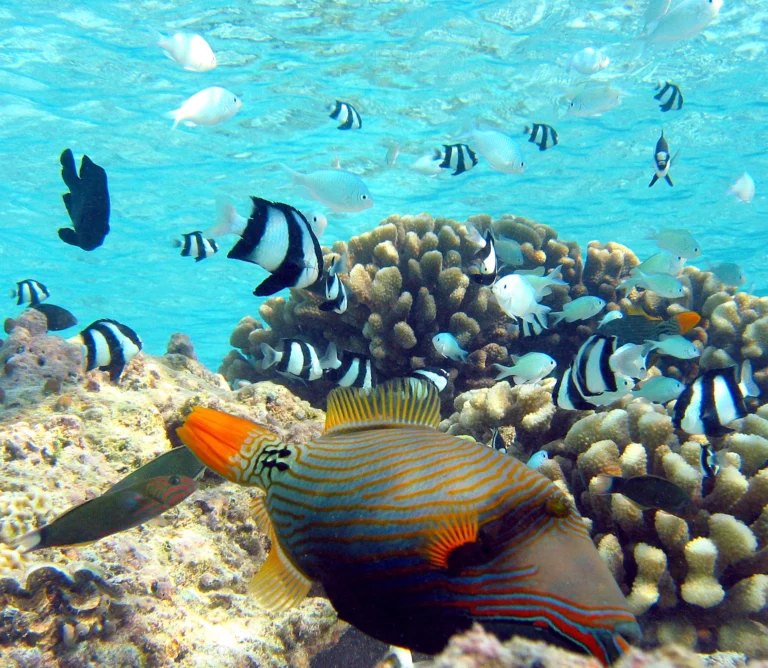7+ Tertiary Consumers in the Amazon Rainforest Ecosystem Discussed
Tertiary consumers in the Amazon rainforest are vital for regulating prey populations and maintaining ecosystem balance. They include iconic apex predators like jaguars and cougars, as well as large constrictor snakes such as anacondas and boa constrictors. Birds of prey like harpy eagles also play a crucial role, alongside aquatic predators like river otters and piranhas. Additionally, giant freshwater species like arapaimas and intelligent mammals like dolphins contribute to the intricate food web of the Amazon rainforest, ensuring the health and stability of its ecosystems.
1. Jaguar: The Apex Predator of the Amazon Rainforest
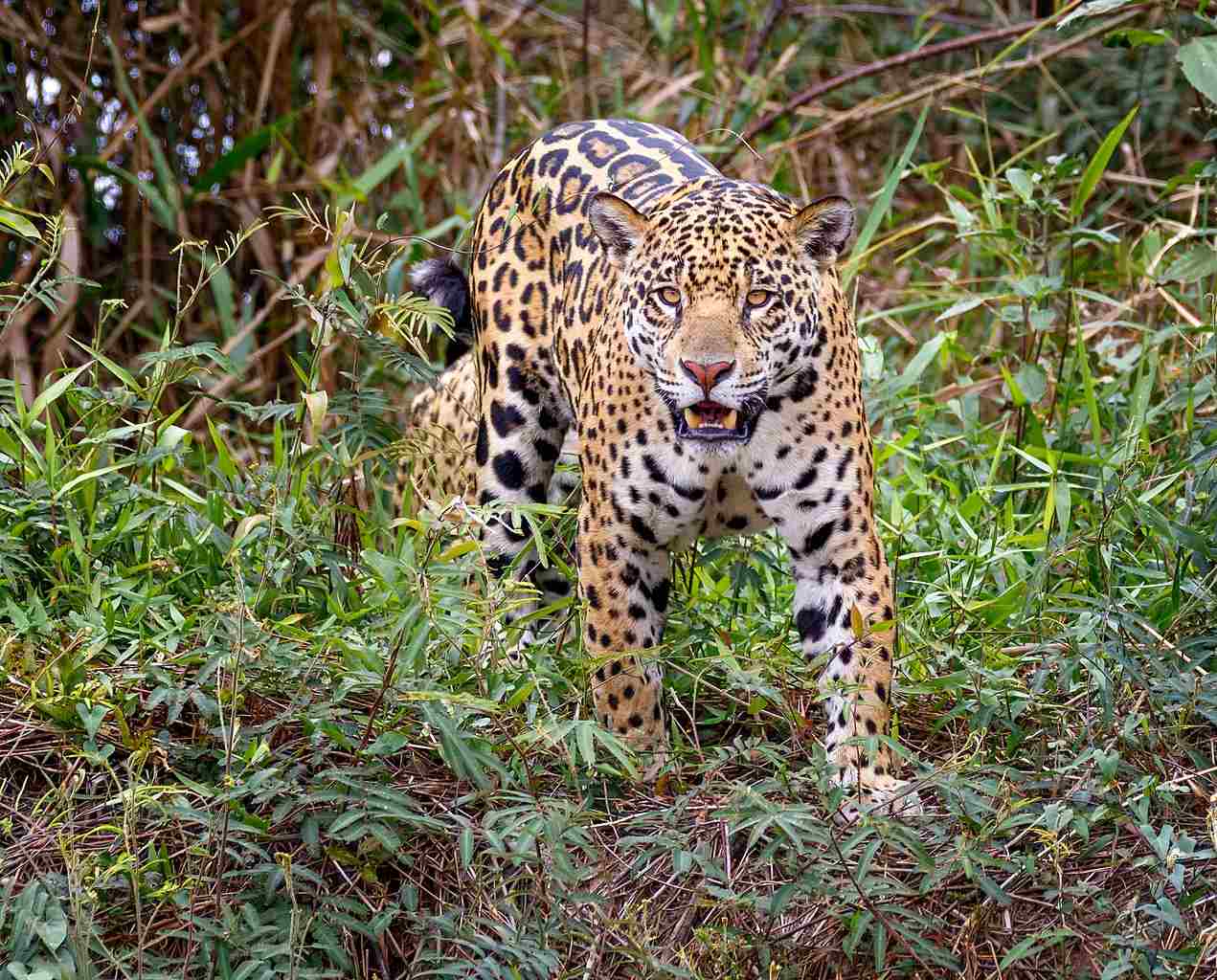
Description: Jaguars (Panthera onca) are iconic big cats known for their stunning golden coats adorned with black rosettes. They are the largest felids in the Americas and hold the title of apex predators in the Amazon rainforest, making them essential components of the ecosystem.
Habitat: Jaguars inhabit a variety of habitats within the Amazon basin, including dense forests, wetlands, and grasslands. They are skilled swimmers and are often found near water bodies, such as rivers and lakes, where they hunt for prey.
Feeding Habits: As tertiary consumers, jaguars primarily prey on medium to large-sized animals, including capybaras, deer, peccaries, and occasionally even caimans and anacondas. They are ambush predators, relying on stealth and strength to overpower their prey with a powerful bite to the skull or neck.
Role in the Ecosystem: Jaguars play a crucial role in regulating the populations of their prey species, which helps maintain the balance of the ecosystem. By keeping herbivore populations in check, they indirectly contribute to the health of vegetation and the overall biodiversity of the rainforest.
Conservation Status: Despite their importance, jaguars face significant threats, including habitat loss, fragmentation, and poaching. Conservation efforts are underway to protect these magnificent cats and their habitats, including the establishment of protected areas and corridors to facilitate their movement across landscapes.
Cultural Significance: Jaguars hold a prominent place in the mythology and culture of indigenous Amazonian tribes, often symbolizing strength, power, and mysticism. They are revered and respected as spiritual beings, reflecting the deep connection between humans and nature in the region.
2. Cougar: The Stealthy Hunter of the Amazon
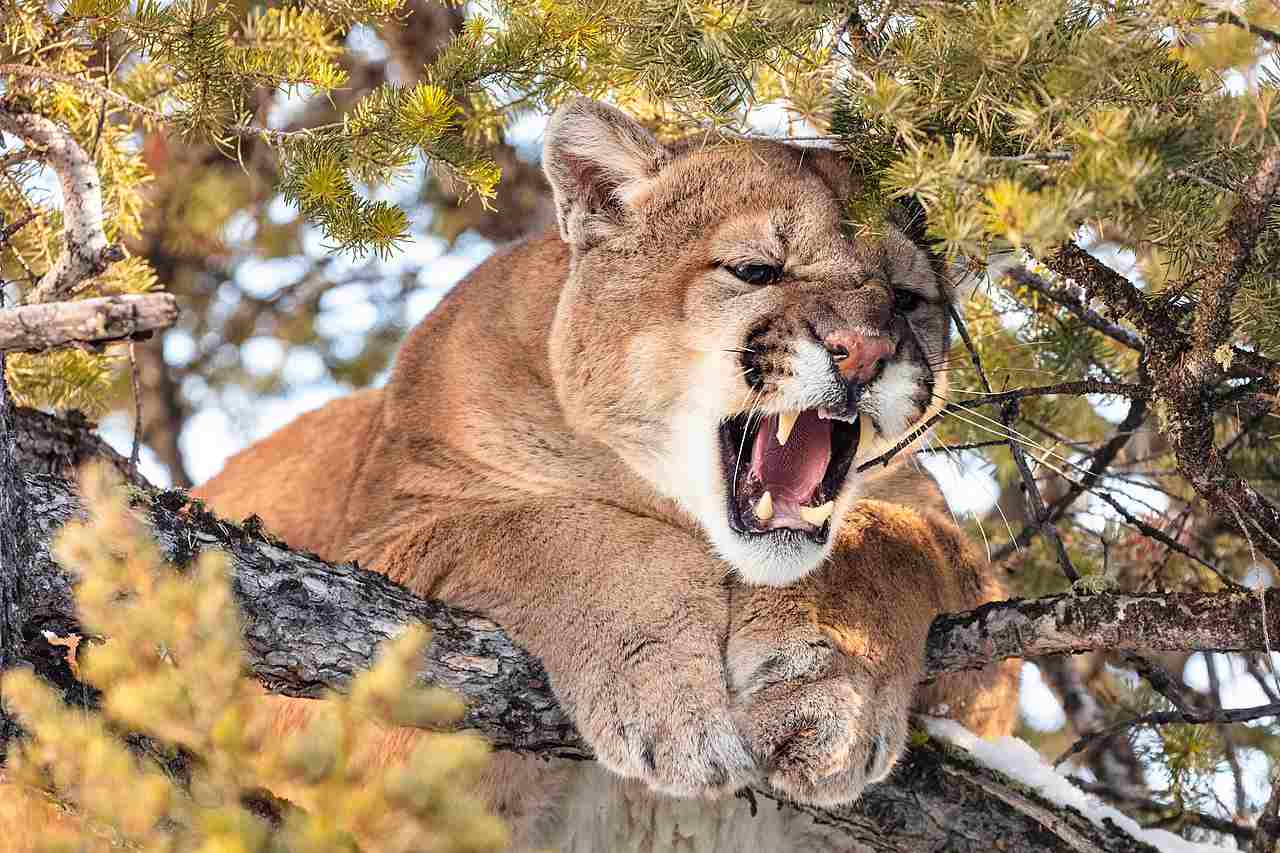
Description: Also known as pumas or mountain lions, cougars (Puma concolor) are sleek and agile predators with tawny coats and muscular bodies. Though primarily associated with North America, they also inhabit parts of the Amazon rainforest, where they are apex predators.
Habitat: Cougars in the Amazon rainforest are typically found in areas with dense vegetation and ample prey, such as deer, peccaries, and smaller mammals. They prefer habitats that offer cover for stalking and ambush hunting.
Feeding Habits: As tertiary consumers, cougars prey on a variety of animals, including deer, capybaras, and smaller mammals like rodents and monkeys. They are solitary hunters, relying on stealth and speed to ambush their prey.
Role in the Ecosystem: Cougars help regulate the populations of their prey species, which in turn affects vegetation dynamics and the overall balance of the ecosystem. By controlling herbivore populations, they indirectly influence plant communities and biodiversity.
Conservation Status: While cougars are not specifically targeted by poachers in the Amazon, they face threats such as habitat loss and fragmentation due to human activities like deforestation and development. Conservation efforts aimed at protecting their habitats also benefit other wildlife species in the region.
3. Anaconda: The Giant Constrictor of the Amazon Waters
Description: Anacondas are large, non-venomous snakes belonging to the genus Eunectes. The green anaconda (Eunectes murinus) is the largest and most well-known species, capable of reaching lengths of over 20 feet and weighing several hundred pounds.
Habitat: Anacondas are semi-aquatic snakes that inhabit swamps, marshes, and slow-moving rivers and streams throughout the Amazon basin. They are excellent swimmers and spend much of their time in or near water, where they hunt for prey.
Feeding Habits: As apex predators in aquatic ecosystems, anacondas prey on a variety of animals, including fish, amphibians, birds, and mammals. They are ambush hunters, relying on camouflage and stealth to capture their prey before constricting it with their powerful coils.
Role in the Ecosystem: Anacondas play a crucial role in controlling populations of aquatic and semi-aquatic species, helping maintain the balance of the ecosystem. By preying on a diverse range of animals, they contribute to the regulation of prey populations and the health of aquatic ecosystems.
Conservation Status: While anacondas are not currently listed as endangered, they face threats such as habitat destruction, pollution, and hunting for their skins. Conservation efforts aimed at protecting their habitats and regulating trade in their skins are essential for their long-term survival.
4. Boa Constrictor: The Ambush Predator of the Amazon Forest
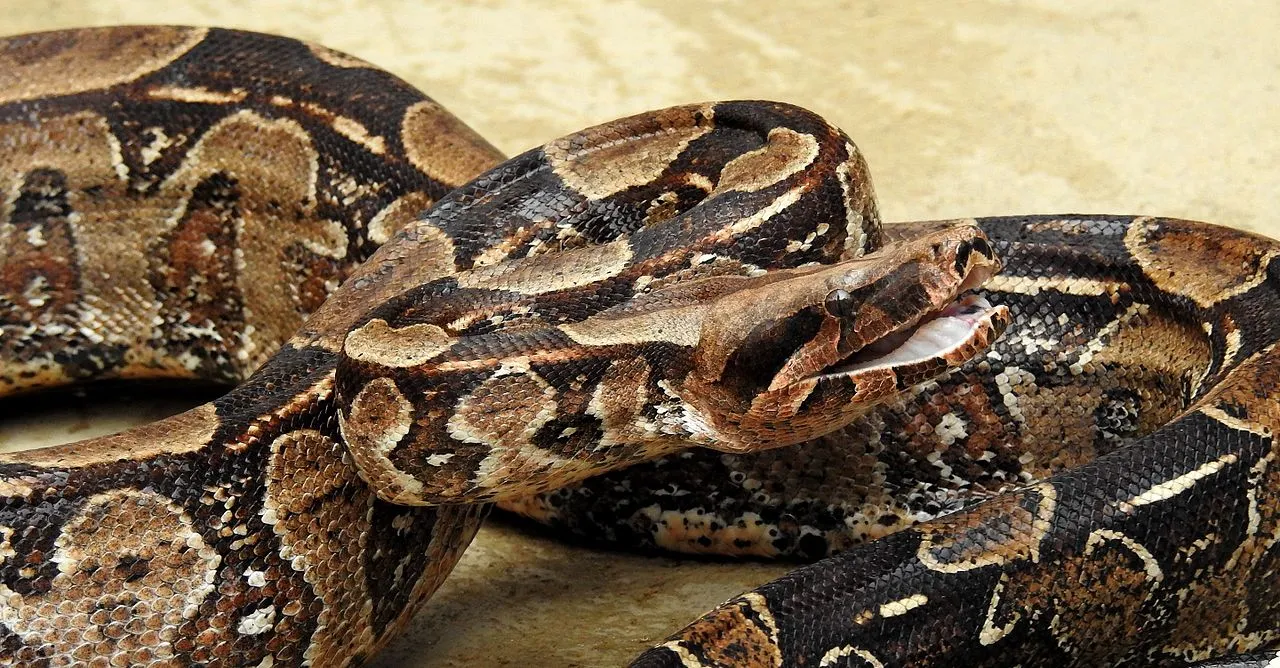
Description: Boa constrictors (Boa constrictor) are large, non-venomous snakes found throughout the Amazon rainforest and other parts of Central and South America. They are characterized by their robust bodies, distinctive patterns, and heat-sensing pits.
Habitat: Boa constrictors are highly adaptable and can be found in a variety of habitats within the Amazon basin, including forests, grasslands, and even urban areas. They are arboreal snakes, meaning they spend much of their time in trees, where they hunt for prey.
Feeding Habits: As ambush predators, boa constrictors prey on a wide range of animals, including birds, small mammals, lizards, and occasionally other snakes. They strike quickly and use constriction to subdue their prey before swallowing it whole.
Role in the Ecosystem: Boa constrictors help regulate populations of small mammals and other prey species, which in turn affects vegetation dynamics and the balance of the ecosystem. They play a vital role in controlling rodent populations, which can have significant impacts on agricultural areas.
Conservation Status: While boa constrictors are not currently considered endangered, they face threats such as habitat loss, fragmentation, and persecution by humans who fear them. Conservation efforts aimed at protecting their habitats and reducing human-snake conflicts are crucial for their continued survival.
5. Harpy Eagle: The Mighty Raptor of the Canopy
Description: The Harpy Eagle (Harpia harpyja) is one of the largest and most powerful birds of prey in the world, with a wingspan of up to 7 feet and talons the size of grizzly bear claws. Its striking appearance, including a distinctive double crest of feathers on its head, makes it a symbol of power and strength in the Amazon rainforest.
Habitat: Harpy Eagles inhabit the dense tropical forests of Central and South America, including the Amazon basin. They are primarily found in mature, undisturbed forests with tall trees that provide suitable nesting sites and abundant prey.
Feeding Habits: As apex predators, Harpy Eagles prey on a variety of animals, including monkeys, sloths, iguanas, and large birds such as macaws and toucans. They are powerful hunters, capable of capturing prey weighing up to half their own body weight.
Role in the Ecosystem: Harpy Eagles play a crucial role in regulating populations of their prey species, which helps maintain the balance of the ecosystem. By targeting medium to large-sized animals, they contribute to the health of forest ecosystems and prevent overpopulation of certain species.
Conservation Status: Harpy Eagles are listed as Near Threatened by the International Union for Conservation of Nature (IUCN) due to habitat loss and fragmentation, as well as hunting and persecution by humans. Conservation efforts focused on protecting their habitats and reducing human-wildlife conflicts are essential for their long-term survival.
6. River Otter: The Playful Predator of Amazonian Waterways
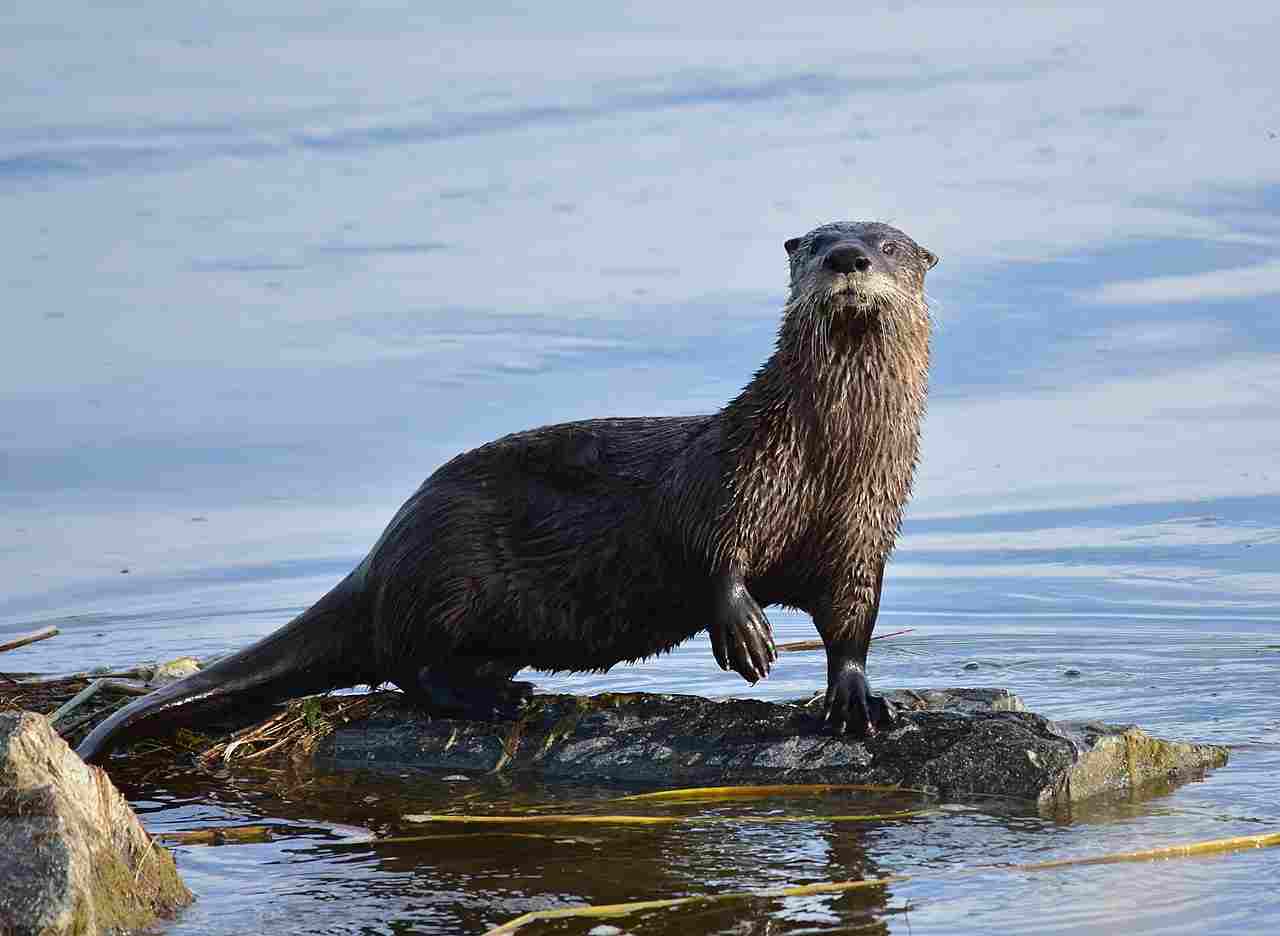
Description: River otters (Lontra longicaudis) are sleek and agile carnivores adapted for life in aquatic environments. They have long, streamlined bodies, webbed feet, and dense fur that insulates them in cold water. River otters are highly social animals known for their playful behavior.
Habitat: River otters inhabit freshwater ecosystems throughout the Amazon basin, including rivers, streams, lakes, and wetlands. They are excellent swimmers and are often found in areas with abundant fish and other aquatic prey.
Feeding Habits: As tertiary consumers, river otters primarily feed on fish, crustaceans, amphibians, and occasionally small mammals and birds. They are opportunistic hunters, using their keen senses and agility to catch prey both in the water and on land.
Role in the Ecosystem: River otters play a vital role in maintaining the health of freshwater ecosystems by controlling populations of fish and other prey species. They also help regulate populations of aquatic invertebrates, which play important roles in nutrient cycling and ecosystem processes.
Conservation Status: River otters face threats such as habitat loss, pollution, and hunting for their fur and meat. Conservation efforts aimed at protecting freshwater habitats and reducing human impacts on water quality are essential for their continued survival in the Amazon rainforest.
7. Piranha: The Voracious Predator of Amazonian Waters
Description: Piranhas are a group of freshwater fish known for their sharp teeth, powerful jaws, and ferocious feeding behavior. They belong to the family Characidae and are native to South America, where they inhabit rivers, lakes, and flooded forests throughout the Amazon basin.
Habitat: Piranhas are highly adaptable and can be found in a variety of aquatic habitats within the Amazon rainforest, including slow-moving rivers, oxbow lakes, and flooded forests. They are often associated with nutrient-rich environments and are important components of freshwater ecosystems.
Feeding Habits: As tertiary consumers, piranhas primarily feed on fish, but they are opportunistic feeders and will also consume other prey, including insects, crustaceans, and even small mammals or birds that venture too close to the water’s edge.
Role in the Ecosystem: Piranhas play a crucial role in controlling populations of fish and other prey species, which helps maintain the balance of freshwater ecosystems in the Amazon rainforest. By targeting weak, injured, or dead animals, they also contribute to nutrient cycling and ecosystem health.
Conservation Status: Piranhas are not currently considered endangered, but they face threats such as habitat destruction, pollution, and overfishing. Sustainable management of freshwater resources and conservation measures aimed at protecting their habitats are essential for maintaining healthy populations of piranhas in the Amazon.
8. Arapaima: The Giant of the Amazon Rivers
Description: The Arapaima (Arapaima gigas) is one of the largest freshwater fish species in the world, capable of reaching lengths of over 10 feet and weighing several hundred pounds. It has a distinctive appearance, with a streamlined body, large scales, and a prominent bony head.
Habitat: Arapaimas are native to the Amazon basin, where they inhabit slow-moving rivers, flooded forests, and oxbow lakes. They are air-breathing fish and often come to the surface to gulp air, allowing them to survive in oxygen-deprived waters.
Feeding Habits: As apex predators in freshwater ecosystems, Arapaimas feed primarily on fish, including smaller species as well as their own juveniles. They are ambush predators, using their large size and powerful jaws to capture prey with lightning-fast strikes.
Role in the Ecosystem: Arapaimas play a crucial role in controlling populations of fish and other aquatic species, which helps maintain the balance of freshwater ecosystems in the Amazon rainforest. By preying on smaller fish, they indirectly influence the composition and abundance of other species in their habitat.
Conservation Status: Arapaimas are listed as Vulnerable by the International Union for Conservation of Nature (IUCN) due to overfishing, habitat loss, and infrastructure development in their native range. Sustainable management of freshwater resources and conservation measures aimed at protecting their habitats are essential for their long-term survival.
9. Dolphin: The Intelligent Inhabitant of Amazonian Waterways
Description: Amazon River Dolphins, also known as boto (Inia geoffrensis) and tucuxi (Sotalia fluviatilis), are two species of freshwater dolphins found in the Amazon basin. They are characterized by their pinkish coloration, elongated snouts, and highly intelligent behavior.
Habitat: Amazon River Dolphins inhabit the main rivers and tributaries of the Amazon basin, including the Amazon River itself and its various branches. They prefer deep, slow-moving waters with abundant fish and other prey.
Feeding Habits: As apex predators in freshwater ecosystems, Amazon River Dolphins feed primarily on fish, but they may also consume crustaceans and other small aquatic animals. They use echolocation to locate prey and navigate their murky underwater habitats.
Role in the Ecosystem: Amazon River Dolphins play a crucial role in maintaining the health of freshwater ecosystems by controlling populations of fish and other prey species. They also serve as indicators of ecosystem health, as declines in their populations can signal environmental degradation or pollution.
Conservation Status: Both boto and tucuxi dolphins are listed as Vulnerable by the International Union for Conservation of Nature (IUCN) due to habitat loss, pollution, and incidental capture in fishing gear. Conservation efforts focused on protecting freshwater habitats and reducing human impacts on water quality are essential for their continued survival in the Amazon rainforest.
*Summary
-
Jaguar:
-
Apex predator known for golden coats with black rosettes.
-
Found in dense forests near water bodies.
-
Preys on medium to large-sized animals.
-
Crucial for regulating prey populations and ecosystem balance.
-
-
Cougar:
-
Sleek predator found in the Amazon.
-
Hunts in dense vegetation, preying on various animals.
-
Helps regulate prey populations in the ecosystem.
-
-
Anaconda:
-
Large constrictor snake found in swamps and rivers.
-
Preys on fish, amphibians, birds, and mammals.
-
Crucial for controlling aquatic prey populations.
-
-
Boa Constrictor:
-
Arboreal snake found in forests and grasslands.
-
Hunts birds, mammals, and occasionally other snakes.
-
Regulates populations of small mammals and birds.
-
-
Harpy Eagle:
-
Large raptor with a distinctive appearance.
-
Hunts monkeys, sloths, and large birds.
-
Maintains the balance of forest ecosystems.
-
-
River Otter:
-
Aquatic carnivore found in freshwater ecosystems.
-
Feeds on fish, crustaceans, and amphibians.
-
Crucial for controlling fish populations in rivers and lakes.
-
-
Piranha:
-
Voracious fish found in Amazonian waters.
-
Preys on fish, insects, and small mammals.
-
Plays a vital role in controlling fish populations.
-
-
Arapaima:
-
Giant freshwater fish found in rivers and lakes.
-
Preys on smaller fish and juveniles.
-
Important for regulating fish populations.
-
-
Dolphin:
-
Intelligent freshwater mammal found in Amazon rivers.
-
Feeds on fish and uses echolocation.
-
Indicator of ecosystem health and plays a crucial role in maintaining fish populations.
-
| Tertiary Consumers | Summary |
| Jaguar |
Apex predator with golden coats; preys on medium to large-sized animals; crucial for regulating prey populations and ecosystem balance.
|
| Cougar |
Sleek predator hunting in dense vegetation; helps regulate prey populations in the ecosystem.
|
| Anaconda |
Large constrictor snake found in swamps and rivers; preys on fish, amphibians, birds, and mammals; crucial for controlling aquatic prey populations.
|
| Boa Constrictor |
Arboreal snake hunting birds, mammals, and occasionally other snakes; regulates populations of small mammals and birds.
|
| Harpy Eagle |
Large raptor hunting monkeys, sloths, and large birds; maintains the balance of forest ecosystems.
|
| River Otter |
Aquatic carnivore feeding on fish, crustaceans, and amphibians; crucial for controlling fish populations in rivers and lakes.
|
| Piranha |
Voracious fish preying on fish, insects, and small mammals; plays a vital role in controlling fish populations.
|
| Arapaima |
Giant freshwater fish preying on smaller fish and juveniles; important for regulating fish populations.
|
| Dolphin |
Intelligent freshwater mammal feeding on fish and using echolocation; indicator of ecosystem health and crucial for maintaining fish populations.
|
*FAQs
FAQ: What are apex predators in the Amazon rainforest? Answer: Apex predators in the Amazon rainforest are animals at the top of the food chain, with no natural predators of their own. They play a crucial role in regulating the populations of other species and maintaining the balance of the ecosystem. Examples include jaguars, Harpy Eagles, and anacondas.
FAQ: How do tertiary consumers contribute to ecosystem balance in the Amazon? Answer: Tertiary consumers in the Amazon rainforest help regulate the populations of their prey species, preventing overpopulation and maintaining the balance of the ecosystem. By controlling the abundance of certain species, they indirectly influence vegetation dynamics and overall biodiversity.
FAQ: What are some threats to tertiary consumers in the Amazon rainforest? Answer: Tertiary consumers in the Amazon face various threats, including habitat loss and fragmentation due to deforestation, hunting and poaching for their fur, skins, or body parts, pollution of water bodies, and human-wildlife conflicts. These threats can lead to population declines and disrupt ecosystem dynamics.
FAQ: How are conservation efforts helping protect tertiary consumers in the Amazon? Answer: Conservation efforts in the Amazon rainforest include establishing protected areas, implementing sustainable management practices, regulating hunting and poaching, restoring degraded habitats, and raising awareness about the importance of biodiversity conservation. These efforts aim to safeguard the habitats and populations of tertiary consumers and other wildlife species.
